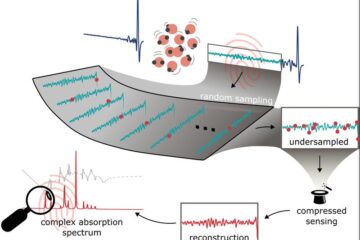Latest News

Seed dormancy may hold the key to fighting weeds
Researchers are studying rice genes as a model to understand germination
Weeds flourish in agricultural, urban, and natural settings because they have certain characteristics, such as seed dormancy, that provide for their persistence. Dormant weed seeds in the soil avoid exposure to control practices that target emerging weed seedlings.
Scientists from the USDA-Agricultural Research Service and North Dakota State University, Fargo, ND, are focusing their research on underst

Circadian influence in plants more widespread than previously thought
While picking apart the genetic makeup of the plant Arabidopsis, two Dartmouth researchers made a startling discovery. They found that approximately 36 percent of its genome is potentially regulated by the circadian clock, which is three and a half times more than had previously been estimated.
The study, which appears in the June issue of Plant Physiology, was conducted by C. Robertson McClung, Dartmouth professor of biological sciences, and Todd Michael, a former Dartmouth graduate studen

Protecting vessel loss in the eyes of premature infants
As premature infants often have under-developed lungs, oxygen is administered following birth. One devastating side effect, however, is the development of retinopathy of prematurity (ROP), whereupon oxygen administration to the infant suppresses the expression of essential growth factors that promote the development of retinal blood vessels, resulting in blindness. In the July 1 issue of the Journal of Clinical Investigation, a study by researchers at Harvard Medical School and Children’s Hospit

ESA’s Mars Express first check-out nearly complete
ESA’s Mars Express spacecraft is progressing further every day on its journey to the Red Planet. Everything is set for arrival at Mars on the night of 25 December 2003, after a journey of about 400 million kilometres. In the weeks since its launch, engineers have started to thoroughly test the spacecraft and its equipment.
This testing phase is standard for all spacecraft on the way to their destination. Known as commissioning, it began 3 weeks after the launch. During this time, ground cont

Pitt researchers find genes for depression; Play role in mood disorders, shorter lifespan
Researchers at the University of Pittsburgh have completed the first survey of the entire human genome for genes that affect the susceptibility of individuals to developing clinical depression.
George S. Zubenko, M.D., Ph.D., professor of psychiatry at the University of Pittsburgh School of Medicine and adjunct professor of biological sciences at Carnegie Mellon University and his team have located a number of chromosomal regions they say hold the genetic keys to a variety of mental illness

Simulation software beats traditional approach in online course
Students in an online class who learned networking through a commercially available simulation scored higher and retained more course information than students taught with a traditional network-diagramming software package, says a Penn State researcher.
“Those students also demonstrated better understanding of the networking concepts and indicated they spent more time on course assignments,” said Brian Cameron, instructor in Penn State’s School of Information Sciences and Technology (I











